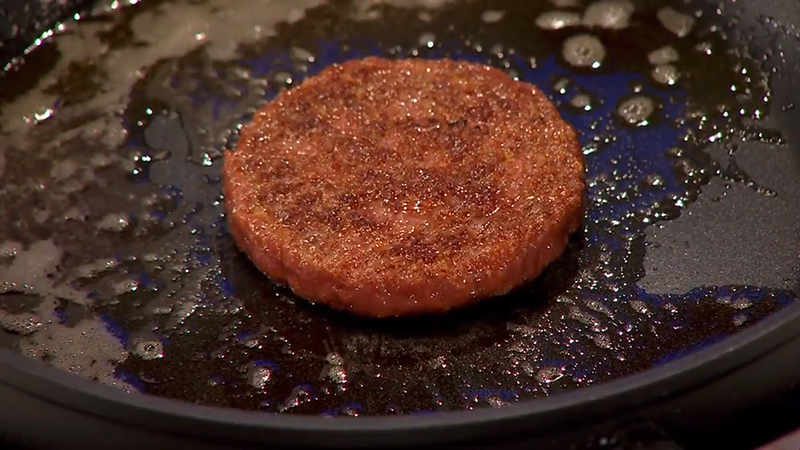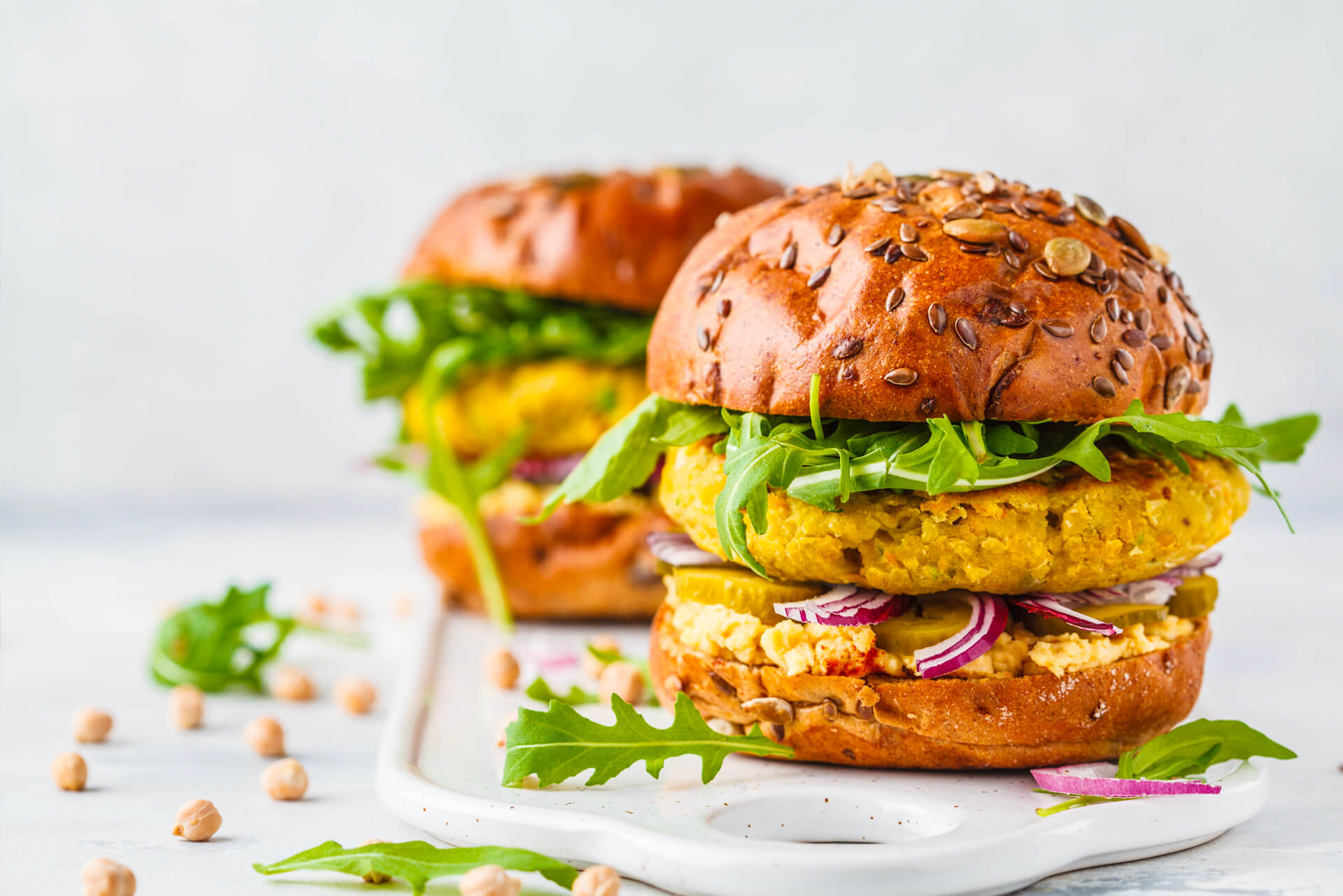The industrialization of food production over the last century gave rise to a livestock industry that is rapidly approaching a crisis. Breaking-point sustainability issues include greenhouse gas emissions, huge land and water requirements as well as ethical concerns about animal welfare.
Nevertheless, our appetite for animal protein keeps on rising. This increase in demand is driven not only by population growth but is also exacerbated by the new trend towards a diet high in fat and protein but low in carbohydrates (so-called keto diet), eliminating “sugars” contained in bread, pasta, rice, fruits and potatoes from the daily meal plan in favour of meat, dairy, eggs and selected vegetables.
With rocketing demand for animal products coinciding with a looming environmental crisis, we are forced to rethink how we are sourcing our ingredients. How can we obtain protein in sufficiently large amounts to feed the ravenous masses and in a sustainable manner? This question may lead to an overhaul of human protein consumption as we know it. However, scientists, investors and companies around the world are already working on new ways to still the protein hunger.
Eliminating cattle, poultry and fish as our primary protein sources is no small matter: the meat industry is a $90bn mammoth network of producers, processors and middlemen.
Manufactured meat
One alternative to classically-sourced animal protein is what’s referred to as cultured meat. In essence, “clean meat” products (or “cultured tissue”, as opponents like to label it) are actually composed of animal proteins, but the meat has been grown outside of an animal. The cultured meat is made of muscle cells, obtained from a small sample taken from a living animal, that are then grown in vitro: essentially, the cells are bathed in a highly nutritious serum, given scaffolding and exercise and encouraged to reproduce and grow into muscle-like fibres. The resulting “meat” is then harvested and processed into meatballs or even steaks.

Image: The world’s first cultured hamburger, eaten 5 August 2013. The cultured meat product was developed by a team of scientists from Maastricht University led by Mark Post (World Economic Forum, wikimedia).
While the first burger developed using this method came with the hefty price tag of €250.0000, a couple of companies (like Dutch Mosa Meat, US Memphis Meats, London´s Higher Steaks or Israel’s Aleph Farm) are eager to make the technology cost-effective. These companies are currently attempting to create products that are a viable and affordable alternative to traditional meat. Several companies, including Israel’s SuperMeat, want to take this method one step further: they aim to decentralize meat production so that your cultured meat could be grown on-site in shops, restaurants or even at home. The method isn’t just for burgers either: US Wild Type and Finless Foods are using the cultured meat method to grow seafood substitutes. Other companies are using similar methods to grow mass-produced ingredients like milk and egg whites for large-scale industrial applications.
With rocketing demand for animal products coinciding with a looming environmental crisis, we are forced to rethink how we are sourcing our ingredients.
While this new form of protein production might on first sight tick a lot of boxes with the environmental impact and ethical concerns, there are still some significant challenges to overcome. In addition to the necessary cost reduction, growing these cells still relies on huge amounts of animal serum. Food safety is also a potential concern: protecting the cultures requires significant amounts of antibiotics, which continues the enormously problematic use of antibiotics in the livestock industry. Thus, this method still has a long way to go before we’re manufacturing our own steaks in the kitchen pantry.
Plant-based proteins
Plants present us with another alternative source of protein. Plant-based products, made to imitate meat, dairy and egg, are already flying off supermarket shelves all around the world. With many vegans and vegetarians choosing these alternatives on a daily basis, sales for plant-based milk, cheese, mayonnaise and meat are booming. The products are becoming increasingly popular with omnivores as well. Many companies have dedicated themselves exclusively to these animal-product alternatives: e.g. Perfect Day (US), Soylent (US), Huel (UK), Ripple Foods (US) and Kite Hill (US).
Worldwide, investors are betting on these new methods of protein production; the first few products are already on the shelves and on our plates.
Again, investors are paying attention to consumer trends. California´s Impossible Foods, responsible for the “Impossible burger” currently confounding Burger King customers, raised $114m in April last year, bringing their total funding to over $400m. Other competitors in the space, like Beyond Meat (US), Good Catch (US) or New Wave Foods (US), have also obtained significant funding to develop and commercialize meat and seafood alternatives based on proteins derived from peas, beans and even algae.

Although these plant-based products might indeed meet our need for protein, the trick to consumer satisfaction will be to give them the right taste, texture and appearance. In other words: making them taste like the “real” thing. Currently, matching the amino acid and nutrient profile of meat requires significant processing and modification with flavours, colours and food additives which is not exactly in line with the pure nature image suggested by the labels. Still, as popularity increases the prices are dropping and sales are at an all-time high.
Bug burgers
Along with plant-based alternatives and cultured meat, the third new protein pillar could be derived from bugs. While entomophagy (insect consumption) is common in more than 110 countries worldwide, caterpillars, mealworms and crickets are, so far, not common additions to a Western diet.
Even so, high-tech, automated insect factories are popping up all over the globe and insects have the potential to become a major source of human nutrition. Compared to other protein sources, insects offer several significant advantages: they have short generation cycles, produce rapidly, are low cost to raise while being high in fat, protein and micronutrients.
How can we obtain protein in sufficiently large amounts to feed the ravenous masses and in a sustainable manner?
Under European “Novel Food” regulations, crickets, grasshoppers and mealworms can currently only be sold as whole organism (under the label “traditional foods from a third country”). Mealworm flour and other processed bug products need to undergo a 1.5-year regulatory procedure before they can be sold in the EU, which is a barrier to market entry for a lot for start-ups. Still, companies like Ynsect are finding the funds to make it work: the French company recently closed a Series C round of € 110M, the largest round ever for agriculture technology outside of the US. They are currently focusing on providing protein-rich feed for fish farming, pet food and even fertilizer. It might still take a while until insect flour will also be available in European supermarkets, but the change is coming.
Altered appetites
The paradigm shift required to move away from unsustainable practices is enormous. Eliminating cattle, poultry and fish as our primary protein sources is no small matter: the meat industry is a $90bn mammoth network of producers, processors and middlemen. The logistics needed to change this system are daunting.
Nonetheless, worldwide, investors are betting on these new methods of protein production; the first few products are already on the shelves and on our plates. The list of investors contributing funding animal-free protein products is extensive: top VCs like Khosla Ventures, Kleiner Perkins, Google Ventures, Draper Fisher Jurvetson; wealthy individuals including Bill Gates and Richard Branson; food tycoons like Cargill and Tyson Food. The monetary support for this market shift is there.
While this new investment segment has some serious tailwind, there are still significant technical challenges before any of these three alternative protein sources become serious staples of our diet. However, the biggest decider, and the biggest unknown variable in the equation, is the consumer. While many customers are willing to try one of these new protein resources, a recent European survey found that almost 75% of respondents wouldn’t consider eating either an insect, seaweed, algae or lab-grown burger on a regular basis.
We will simply have to wait and see if attitudes towards cultured meat, plant-based patties and insect meal alter over time. It is the consumer who holds the key to success. Whether we’re happy to switch from animal meat to alternative proteins in the long-term is the billion-dollar question. The race is on.


